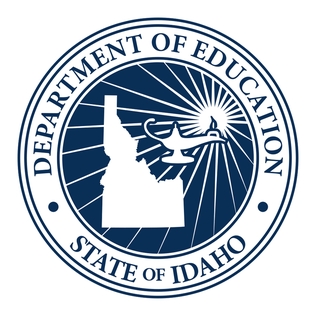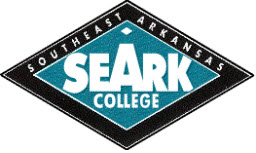
The California State University is a public university system in California, and the largest public university system in the world. It consists of 23 campuses and 7 off-campus centers, which together enroll 457,992 students and employ 56,256 faculty and staff members. In California, it is one of the three public higher education systems, along with the University of California and the California Community Colleges systems. The CSU system is officially incorporated as The Trustees of the California State University, and is headquartered in Long Beach, California.

The University of Minnesota Rochester (UMR) is a public college in Rochester, Minnesota. It is part of the University of Minnesota system and focuses primarily on general health sciences. It was formally established by an act of the state legislature in December 2006. UMR currently offers two bachelor's degrees in the health sciences, Bachelor of Science in Health Sciences and Bachelor of Science in Health Professions.

The California Community Colleges is a postsecondary education system in the U.S. state of California. The system includes the Board of Governors of the California Community Colleges and 73 community college districts. The districts currently operate 116 accredited colleges. The California Community Colleges is the largest system of higher education in the United States, and third largest system of higher education in the world, serving more than 1.8 million students.
The Illinois Community College System consists of 39 public community college districts, composed of 48 community colleges and one multi-college center where 3 of the community colleges offer additional classes. Thirty-seven of the districts have a single college; two districts are multicollege. Since July 1990, the entire state has been included within community college district boundaries.

Charles Bass Reed served as chancellor of the State University System of Florida from 1985 to 1998 and chancellor of the California State University (CSU) system from 1998 to 2012.

The Colorado Commission on Higher Education (CCHE) was established in 1965 by the Colorado General Assembly. The Commission replaced an association which met informally to consider matters related to higher education. The Colorado Department of Higher Education (DHE) is the principal department of the Colorado state government responsible for implementing the policies of the CCHE.
The California Master Plan for Higher Education of 1960 was developed by a survey team appointed by the Regents of the University of California and the California State Board of Education during the administration of Governor Pat Brown. UC President Clark Kerr was a key figure in its development. The Plan set up a coherent system for public postsecondary education which defined specific roles for the already-existing University of California (UC), the state colleges which were joined together by the Plan into the State College System of California and later renamed the California State University (CSU), and the junior colleges which were later organized in 1967 into the California Community Colleges (CCC) system.
The Oregon Office of Degree Authorization (ODA) is a unit of the Office of Student Access and Completion, with responsibilities related to maintaining high standards in private higher education institutions in Oregon. ODA administers laws and provides oversight of private colleges and universities offering degree programs in the state, validates individual claims of degrees, enforces the closure of substandard or fraudulent higher education programs in the state, and enforces policy for publicly funded postsecondary programs and locations. It was formerly a unit of the Oregon Student Access Commission (OSAC), which became Oregon Student Assistance Commission prior to January 1, 2012. Its functions moved to the Oregon Higher Education Coordinating Commission as part of the Office of Student Access and Completion in July 2012.
These organizations for higher education have a common purpose and mission for advocacy in numerous areas of both institutional management and the general public interest. The organizations have specific purpose for issues from faculty unionization to public policy research and service to institutions. Most are focused on the organization and governance of higher and tertiary education, but some are involved in service and research at all levels of education.
The Integrated Postsecondary Education Data System (IPEDS) is a system of interrelated surveys conducted annually by the National Center for Education Statistics (NCES), a part of the Institute for Education Sciences within the United States Department of Education. IPEDS consists of twelve interrelated survey components that are collected over three collection periods each year as described in the Data Collection and Dissemination Cycle. The completion of all IPEDS surveys is mandatory for all institutions that participate in, or are applicants for participation in, any federal financial assistance program authorized by Title IV of the Higher Education Act of 1965, as amended.

The Oklahoma State Regents for Higher Education is the agency of the government of Oklahoma that serves as the governing body of the Oklahoma State System of Higher Education, which is the largest provider of higher education in the state of Oklahoma. The State System consists of all institutions of higher education in Oklahoma that are supported by direct legislative appropriations from the Oklahoma Legislature.

The Florida College System, previously the Florida Community College System, is a system of 28 public community colleges and state colleges in the U.S. state of Florida. In 2020–2021, enrollment consisted of 640,183 students. Together with the State University System of Florida, which consists of Florida's twelve public universities, the two systems control all public higher education in the state of Florida.

Higher education in Ontario includes postsecondary education and skills training regulated by the Ministry of Colleges and Universities and provided by universities, colleges of applied arts and technology, and private career colleges. The current minister is Jill Dunlop who was appointed in June 2021. The ministry administers laws covering 22 public universities, 24 public colleges, 17 privately funded religious universities, and over 500 private career colleges. 18 of the top 50 research universities in Canada are in Ontario.
In the United States, community colleges are primarily two-year public institutions of tertiary education. Community colleges offer undergraduate education in the form of an associate degree. In addition community colleges also offer remedial education, GEDs, high school diplomas, technical diplomas and academic certificates, and in rare cases, a limited number of 4-year bachelor's degrees. After graduating from a community college, some students transfer to a four-year college or university to continue their studies leading to a bachelor's degree. Community college is tuition-free for selected students in 47 states, often under the name College Promise. Most community college instructors have advanced degrees but serve as part-time low wage employees.
The Kentucky Council on Postsecondary Education coordinates change and improvement in Kentucky's postsecondary education system as directed by the Kentucky Postsecondary Education Improvement Act of 1997. The Council is a statewide coordinating agency with 16 members: 14 citizens, one faculty member and one student appointed by the Governor; the Commissioner of Education is an ex officio member.

The Early Academic Outreach Program (EAOP) was established in 1976 by the University of California (UC) in response to the California State Legislatures' recommendation to expand post-secondary opportunities to every Californian student, including those who are first-generation, socio-economically disadvantaged, and English-language learners. As UC's largest academic preparation program, EAOP assists middle and high school students with academic preparation, admissions and financial aid requirements for higher education.

The Idaho State Department of Education is an executive agency of the Idaho state education system. The department is responsible for public elementary and secondary school matters as provided by Title 33, Idaho Code, or as determined by the Idaho State Board of Education. It is headquartered in the state capital, Boise, Idaho.

Southeast Arkansas College (SEARK) is a public community college in Pine Bluff, Arkansas. Formerly a vocational-technical school, the state legislature designated the school as a college in 1991 with the name Pines Technical College. It acquired its current name in 1998.

The Oregon Higher Education Coordinating Commission is a volunteer state board established in 2011 in the U.S. state of Oregon, with responsibilities for advising the governor, the legislature and the Chief Education Office on statewide postsecondary education policies and funding. The fifteen-member commission has authorities for "development of biennial budget recommendations for public postsecondary education in Oregon, making funding allocations to Oregon's public community colleges and public universities, approving new academic programs for the public institutions, allocating Oregon Opportunity Grants, authorizing degrees that are proposed by private and out-of-state (distance) providers, licensing private career and trade schools, overseeing programs for veterans, and additional legislative directives".
California Competes is an American nonprofit policy organization seeking to increase access to college and improve college graduation rates. Created in 2011 by civic and business leaders in California, the group has labeled the state's higher education system dysfunctional and called for better coordination and planning for the future needs of the state's economy. The group's work has included advocating for a more robust statewide education data system and for greater financial supports for parents in college. Prior research had revealed that lower-income areas of the state were being shortchanged in the support they were receiving for community colleges.











